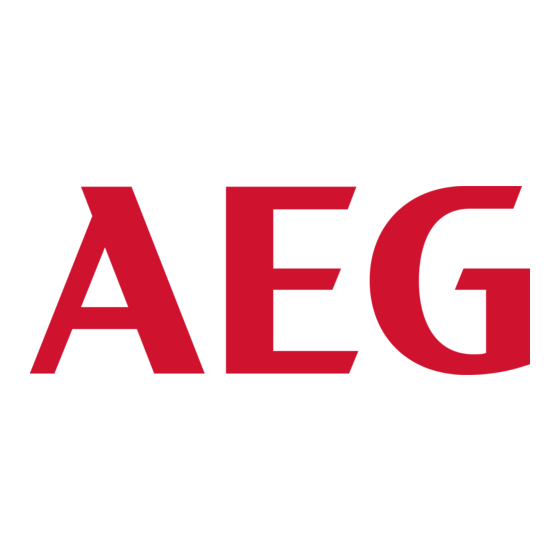AEG 91900K 설치 및 운영 지침 매뉴얼 - 페이지 8
{카테고리_이름} AEG 91900K에 대한 설치 및 운영 지침 매뉴얼을 온라인으로 검색하거나 PDF를 다운로드하세요. AEG 91900K 40 페이지. Ceramic glass hob

The Key Features of Your Appliance
• Glass ceramic cooking surface: The appliance has a glass ceramic
cooking surface and 5 rapid response cooking zones. The particularly
powerful radiant heater elements significantly shorten the amount of
time taken for the zones to heat up.
• Sensor fields: Your appliance is operated using Touch Control sensor
fields.
• Cleaning: The advantage of the ceramic glass cooking surface and
the sensor fields is their accessibility for cleaning. The smooth, flat
surface is easy to clean.
• On/Off sensor field: The "On/Off" sensor field provides the appliance
with a separate mains switch. Touching this switches the power sup-
ply on or off completely.
• Control and function indicators: Digital indicators or control lamp
provide information about settings made, functions activated, as well
as any residual heat of the corresponding cooking zone.
• Safety cut-out: A safety cut-out ensures that all cooking zones
switch off automatically after a period of time if the setting has not
been changed.
• Keep warm setting: 1 is the setting for keeping foods warm.
• Residual heat indicator: An h for residual heat is shown in the dis-
play if the cooking zone becomes so hot that there is a risk of burn-
ing.
• Frying zone: The hob has a special frying zone. This can be set to ei-
ther the round or the oval shape, for example when using a fryer.
• Triple ring cooking zone: The hob features a triple-ring cooking
zone. This zone can be set to different sizes, for example to fit smaller
pots. This will save power.
• Timer: All zones can be automatically switched off using the inte-
grated timer. When the end of the cooking time has been reached,
the cooking zone switches off.
• Power Management: When the front left, rear right and front right
cooking zones are used simultaneously the hob control automatically
brings about the optimal distribution of heating power (see section
"Power Management").
44
